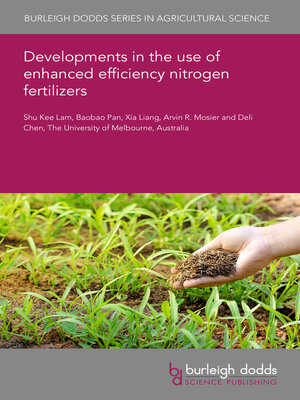Developments in the use of enhanced efficiency nitrogen fertilizers
ebook ∣ Burleigh Dodds Series in Agricultural Science
By Shu Kee Lam

Sign up to save your library
With an OverDrive account, you can save your favorite libraries for at-a-glance information about availability. Find out more about OverDrive accounts.
Find this title in Libby, the library reading app by OverDrive.



Search for a digital library with this title
Title found at these libraries:
| Library Name | Distance |
|---|---|
| Loading... |
To sustainably feed a growing population, we need to increase the efficiency of nitrogen (N) fertilizers while reducing their negative impacts on the environment. Enhanced efficiency fertilizers (EEFs) show promise in reducing the loss of reactive N (Nr: all species of N except N2) to the environment. EEFs work by inhibiting the activities of enzymes involved in soil N processes (urease and nitrification inhibitors) and regulating the release of N from fertilizers in response to soil and environmental conditions (controlled-release fertilizers). However, the limitations of currently available EEFs have not been well addressed. Further research efforts from multi-disciplinary expertise are needed to make a breakthrough. It is important to consider the negative impacts of Nr loss on human and ecosystem health and to monetize the avoided societal costs from using EEFs to incentivize their adoption. This will avoid enormous spending on cleaning up Nr pollution while ensuring global food security.







